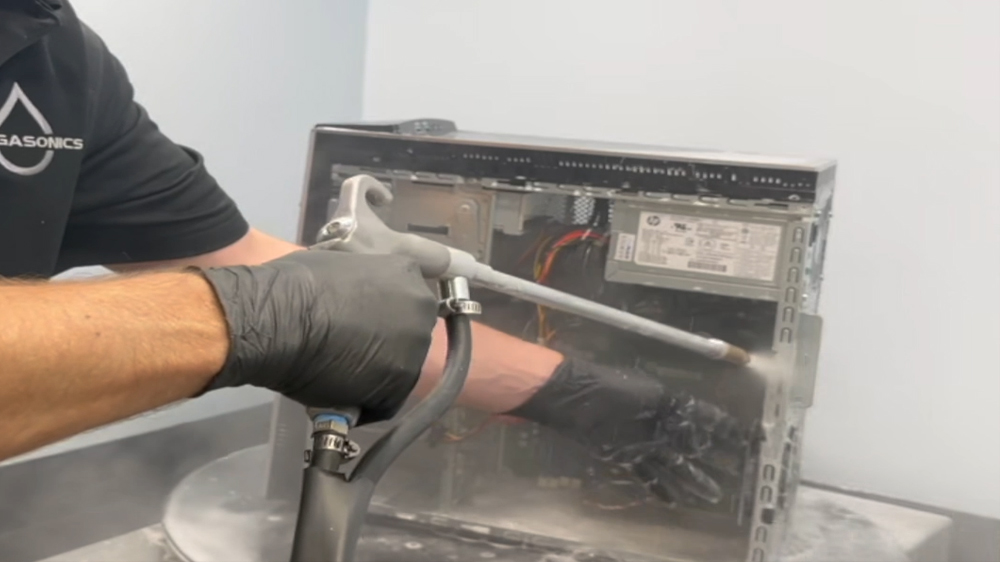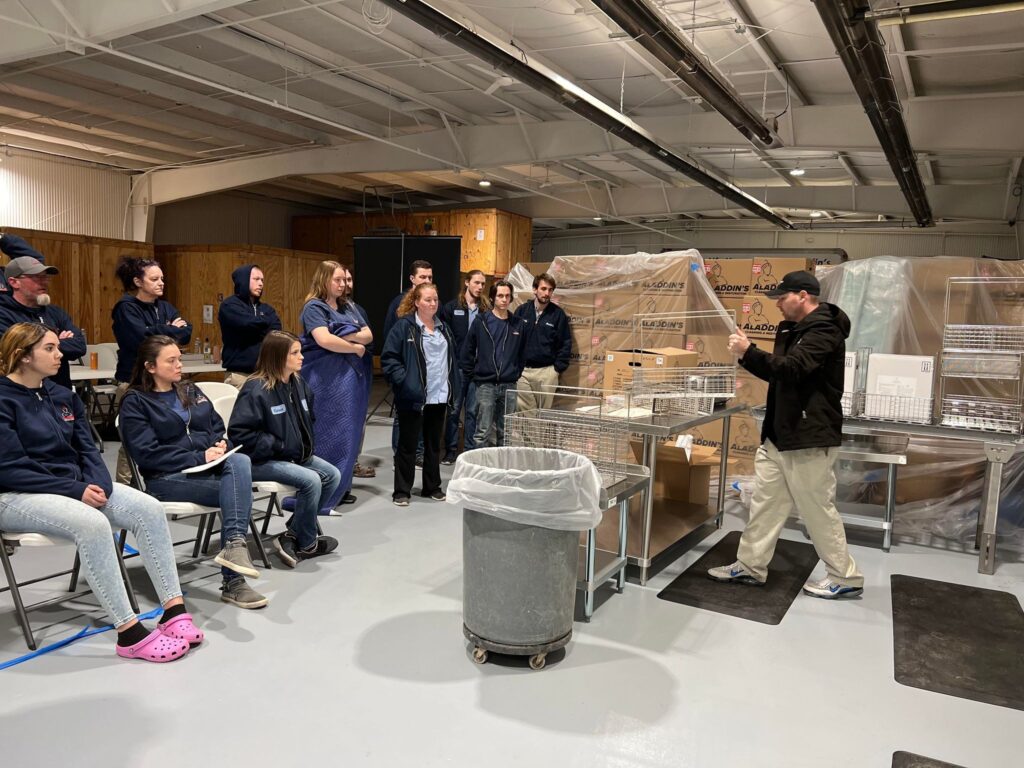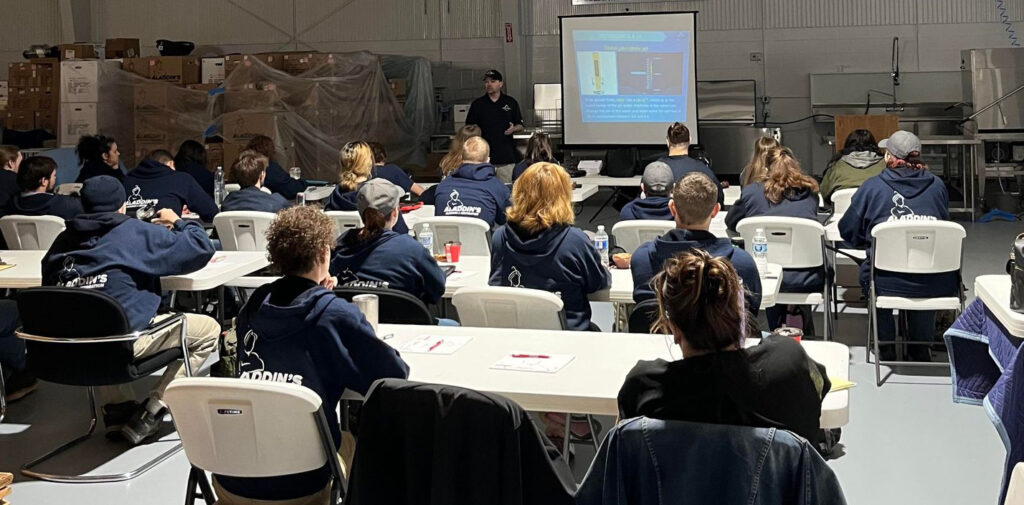Book on-site training at your facility or remote online zoom training today!
Content restoration is a vital aspect of the recovery process after disasters such as storms, floods, or fires. It involves the careful and meticulous restoration of damaged items, ensuring that they are returned to their pre-disaster condition. In this comprehensive guide, we will explore the importance of contents restoration, the benefits of professional training, and provide valuable insights into the process.
Understanding Content Restoration
Contents restoration encompasses the repair and restoration of a wide range of items that may have been damaged during a disaster. From personal belongings and furniture to electronics and vital records, contents restoration focuses on salvaging and restoring these items to their original state. It is a critical part of the rebuilding phase, as it addresses the emotional and practical needs of individuals and businesses affected by a disaster.
The Significance of Content Restoration
Recovering from a disaster extends beyond the structural aspects of a property. Personal belongings hold immense sentimental value and are an integral part of people’s lives. Therefore, it is crucial to ensure that these items are restored to their pre-loss condition. Contents restoration not only helps individuals recover their cherished possessions but also provides a sense of normalcy and stability during the recovery process.
The Content Restoration Process
The contents restoration process typically involves several key steps, including evaluation, pack-out, cleaning, and restoration. Let’s explore each of these steps in detail:
- Evaluation
During the evaluation phase, trained professionals assess the extent of damage to the contents. They categorize items into those that are salvageable, those that cannot be saved, and those that require restoration. This meticulous evaluation ensures that only necessary items are restored, optimizing the restoration process.
- Stabilization
It is important to stabilize contents to keep damage from progressing, especially items such as metal that can rust even more if it is not treated with a rust inhibitor.

- Pack-out
Pack-out is a critical stage of contents restoration. It is important to pack-out contents by category to insure cleaning efficiency when cleaning with an ultrasonic contents cleaning line. Trained professionals handle the delicate task of carefully packing and transporting damaged items to a secure facility for cleaning and restoration. Each item is documented and photographed to maintain an accurate inventory throughout the process.
- Equipment
To ensure that your contents division is efficient and thorough it is important to invest in the proper cleaning equipment. Talk to other restoration companies and ask if they are happy with the equipment they are using and ask how is the support of that equipment company. Ask other questions such as: how is the chemicals, baskets and accessories? Omegasonics has the best support in the industry and uses their equipment for their restoration company. Ultrasonic cleaning is a lot faster and gets in ports and crevices that hand cleaning can not get to. The other advantage to having the correct equipment, it can be used as a marketing tool and will make the adjusters want to work with you over your competitors.

- Cleaning
Cleaning is a crucial step in contents restoration, as it aims to remove contaminants, odors, and damage caused by the disaster. Professional technicians utilize state-of-the-art equipment such as ultrasonic cleaning and specialized techniques to clean and restore various items, such as furniture, electronics, textiles, and more. Ultrasonic cleaning technology, for example, offers efficient and thorough cleaning by utilizing high-frequency soundwaves.
- Restoration
Once items are cleaned, the restoration process begins. This may involve repairing, refinishing, or replacing damaged components to restore items to their pre-loss condition. Skilled professionals utilize their expertise to ensure that the restored items are aesthetically pleasing and fully functional.
The Importance of Content Restoration Training
Content restoration is a specialized field that requires expertise and knowledge in various restoration techniques. Professional training plays a vital role in ensuring that restoration professionals possess the skills necessary to effectively and efficiently restore damaged items. Let’s explore the benefits of contents training:
Enhanced Restoration Techniques
Contents training equips restoration professionals with advanced techniques and methods for restoring a wide range of items. From delicate figurines to intricate electronics, trained professionals have a deep understanding of specialized restoration procedures. This expertise enables them to tackle challenging restoration projects with precision and care.
Efficient Workflow Management

Training in contents restoration provides professionals with valuable insights into workflow management. They learn how to streamline the restoration process, ensuring that items are efficiently evaluated, packed, cleaned, and restored. This optimization minimizes downtime and allows for a swift and seamless restoration experience.
Knowledge of Industry Standards
Contents training ensures that restoration professionals stay up to date with the latest industry standards and best practices. They become well-versed in the appropriate restoration techniques for different materials, ensuring that items are restored correctly without causing further damage.
Safety and Compliance
Contents restoration involves working with potentially hazardous materials and substances. Proper training ensures that restoration professionals are aware of safety protocols and comply with industry regulations. This knowledge protects both restoration professionals and their clients during the restoration process.

Professional Content Restoration Training Programs
There are very few reputable organizations that offer professional contents training programs. Omegasonics programs provide comprehensive education and hands-on experience in content restoration and focuses primarily on efficiency “more boxes per hour”. Omegasonics is one of the few training providers that is also a IICRC CEC provider and the only training in the world that teaches you how to clean every electronic properly including laptops, computers, gaming consoles, televisions, appliances and more. Some of the essential topics covered in these training programs include:
- Inventory Management: Efficiently documenting and cataloging damaged items for accurate tracking.
- Cleaning Techniques: Learning specialized cleaning methods for different materials, such as glass, ceramic, plastics, metal, and specialty.
- Pack-out Procedures: Packing out by category for ultrasonic cleaning efficiency and understanding the proper procedures for safely restoring contents.
- Cleaning Efficiency: Learn how to clean contents faster increasing your boxes per hour.
- Ultrasonic Restoration: Gaining expertise in various restoration techniques to prevent loss while increasing speed.
- Electronics Cleaning: Clean any electronic with confidence.
- Standard Operation Procedures “SOP” for Contents Restoration: Learn the day to day and job to job standard procedures for packout and contents restoration.
- Safety and Compliance: Ensuring adherence to safety protocols and industry regulations when handling hazardous materials.
- Invoicing: Learn to not leave money on the table by billing out correctly.
- Marketing: Market your content restoration business including to other industries.

By enrolling in a professional contents training program, restoration professionals can enhance their skills, expand their knowledge, and provide exceptional restoration services to their clients.
Choosing a Content Restoration Training Program
When selecting a contents restoration training program, it is essential to consider the following factors:
- Accreditation: Ensure that the training program is accredited by reputable organizations or industry associations.
- Curriculum: Review the course curriculum to ensure that it covers all essential aspects of contents restoration.
- Hands-on Experience: Look for programs that offer practical, hands-on training to enhance skills and confidence.
- Industry Expertise: Consider programs taught by experienced professionals who have a deep understanding of contents restoration.
- Reviews and Reputation: Research the reputation of the training program by reading reviews and testimonials from previous participants.
How long should a training program take?
Just like the old saying “quality over quantity” some training programs can be as long as a couple of weeks just teaching common sense things such as wrapping techniques. Omegasonics provides 1 and 2 day classes focusing on the meat and potatoes of what you actually need to learn which is:
How to pack-out more efficiently and clean contents quickly which creates more in-house profit!
By carefully evaluating these factors, restoration professionals can choose a training program that aligns with their goals and provides them with the necessary skills and knowledge to excel in the field of contents restoration.
Omegasonics Training Outlines:
Ultrasonic Content Cleaning

- What is ultrasonic cleaning
- How does it work
- What can be cleaned in an ultrasonic tank
- What electronics can be cleaned in ultrasonics
- Factors that affect cleaning results
- Chemicals & soaps – mixtures
- Temperature
- Time
- Material types
- Contamination Type
- Inventory
- Pack-out by category & residue
- When to hand clean
- Ultrasonic assembly line cleaning efficiency
- General, Plastics, Delicates, Metal and Electric
- Rinse
- Drying/Deodorizing
- Rusted metals
- Delicates
- Electrical contents
- Invoicing
- Marketing (including other industries)
- Hands-On cleaning
Electronics Restoration

- Evaluation (can it be cleaned?)
- Inventory
- Pack-Out
- Transporting
- Tools needed
- Safety
- Stabilization (prevent loss)
- Contamination
- What can be cleaned
- Staging
- Disassembly (when to disassemble)
- Advanced how to clean
- Laptops, TV’s, PC’s, Gaming Consoles, Etc.
- Drying/Deodorizing
- Re-Assembly
- Testing
- Troubleshooting to prevent loss
- Dos and Don’ts
- Data recovery
- Billing
- Profit
- Marketing
- Hands-On cleaning
Become a Certified Content Restoration Technician


Conclusion
Contents restoration is a crucial part of the recovery process after disasters. It involves the meticulous evaluation, pack-out, cleaning, and restoration of damaged items to restore them to their pre-loss condition. Professional contents training plays a vital role in equipping restoration professionals with the necessary skills, knowledge, and techniques to effectively restore a wide range of items. By investing in contents training, professionals can enhance their expertise, streamline their workflow, and provide exceptional restoration services to their clients. If you already had content restoration training from another company and do not feel it was anything of value, call around and speak with the trainer to see what they have to offer your company.
There is a renewed focus on quality and efficiency for processing contents. Just doing an average job with personal property contents may not be enough to earn a spot on the preferred contractor’s list with insurance companies. Contents Restoration is a “hot Button” for insurers and adjusters alike. Reorganizing, retooling and retraining allows your company to capitalize on this opportunity.

Director of Training – Darin Helcher







